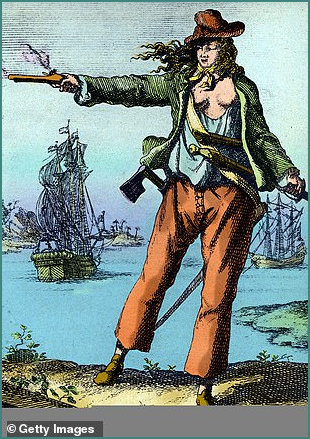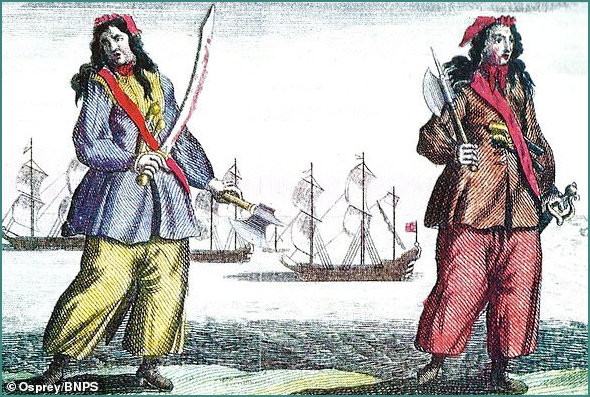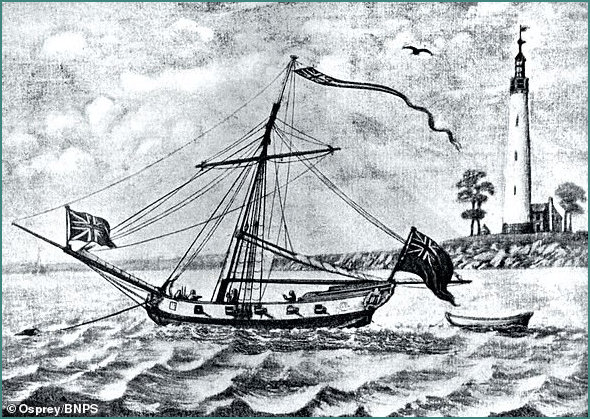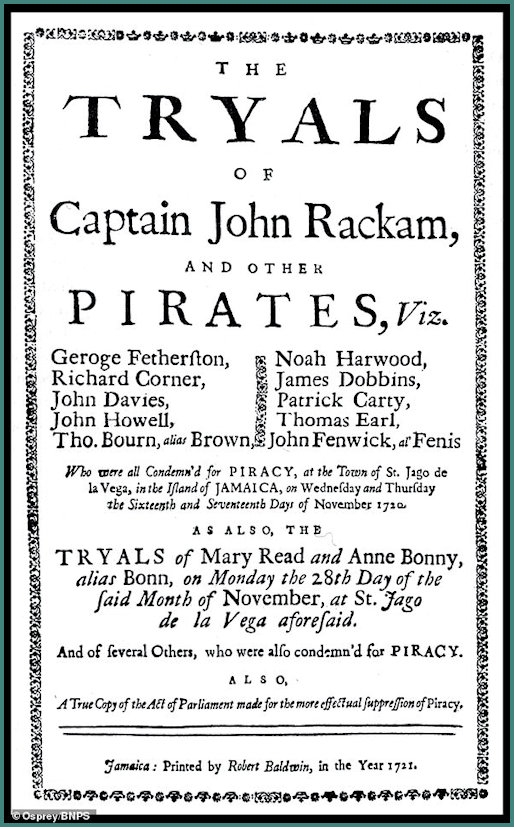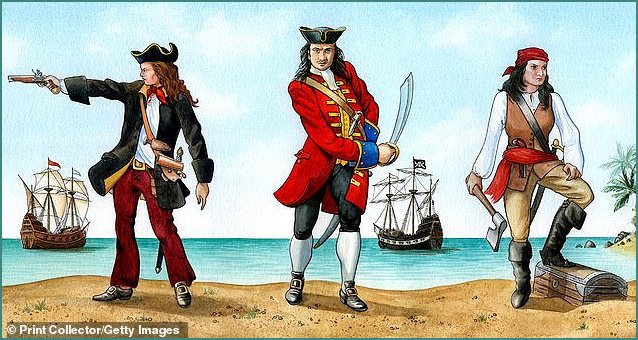Burgh Island - Interesting Bits
Home Page / Art Deco Home / Burgh Island
Adventures with Agatha
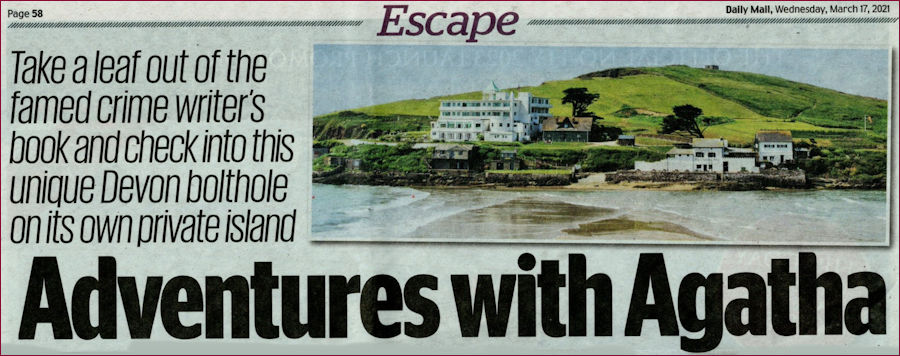
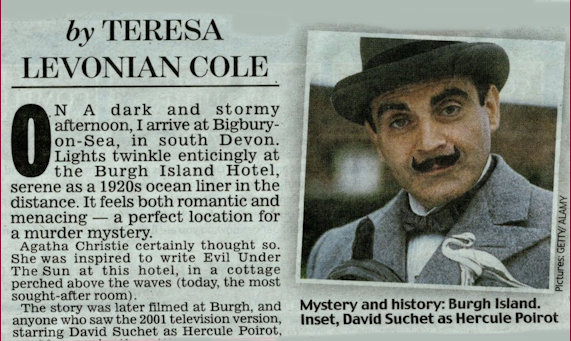
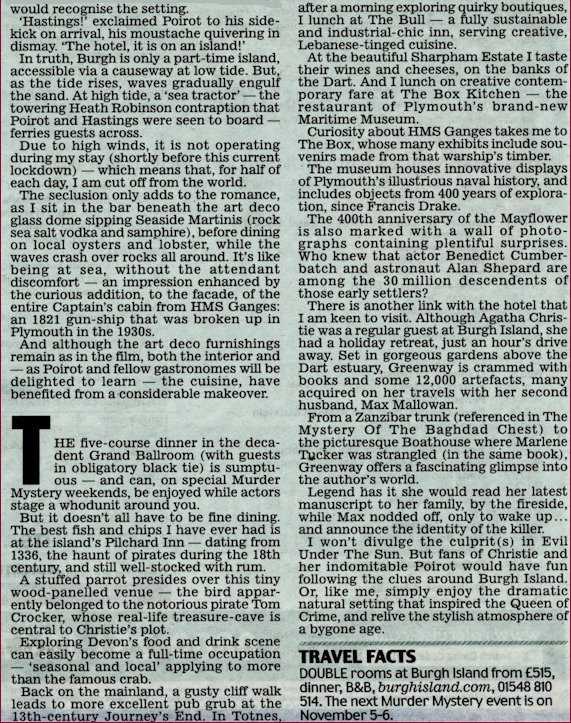
Article as it appeared in the Daily Mail on Wednesday, 17th March 2021
Pirate Invasion of the Island (and a bit of historical information)
The swashbuckling women who wreaked havoc and terror on the high seas
'Left Mary Read and right, Anne Bonny. The pair disguised themselves as men as they wreaked havoc on the high seas' - images and strapline sourced from the Daily Mail and images © Getty Images
Anne Bonny: Bonny was born in Ireland around 1700, the illegitimate daughter of wealthy lawyer, William Cormac, and his housemaid. To keep his daughter close without arousing his wife's suspicion, Cormac had her dressed as a boy and took her into his household as a lawyer's clerk. But when the ruse was uncovered Cormac, his mistress and daughter emigrated to Carolina, where he bought a plantation. Anne later eloped with penniless sailor and part-time pirate, James Bonny. The pair sought fortune among the Caribbean islands, and ended up on the island of New Providence in the Bahamas, a well-known pirate haunt. It was there that Anne came across Captain Jack Rackam - aka, Calico Jack. He was the pirate who came up with the Jolly Roger, the black flag with a skull and crossbones. When the relationship between Anne and Rackam became known, Rogers had her flogged for adultery. For several months, they sailed around the Caribbean on board her lover's ship, the Vanity. At some stage, she became pregnant with Rackam's child. She went to Cuba to give birth, but the baby died or she abandoned. Anne later took fancy to another sailor on their ship. She later discovered that the sailor was a woman, Mary Read.
'Pirates Anne Bonny and Mary Read, who were captured in 1720. They were a part of pirateer Calico Jack Rackam's crew which terrorised the seas in the early 18th century, and they developed a reputation as a fearsome duo that commanded respect. They were both eventually sentenced to hanging for their piracy, but both escaped the feat after 'pleading the belly' - a rule in English law at the time that saw pregnant women receive a stay of execution until they gave birth. Neither were ever executed' - image and strapline sourced from the Daily Mail and image © Osprey/BNPS
Mary Read: Read was born in England around 1690 and brought up by her widowed mother as a boy, in order to claim maintenance from her mother-in-law, who would not have paid up for a girl. As a teenager, Mary joined the Army and fought for years in Holland without any of her fellow soldiers suspecting her identity. She married a fellow trooper who died when the campaign was over. Restless and penniless, she donned men's clothing and boarded a ship bound for the West Indies. Her ship was captured by Rackam's and, together with many of her shipmates, she joined his crew.
'A British single-masted sloop. Probably the most commonly encountered pirate vessel, shown in 1718. The golden age of piracy is considered to have lasted just over a decade, from 1713 to 1726' - image and strapline sourced from the Daily Mail and image © Osprey/BNPS
The REAL Pirates of the Caribbean: How an heiress and a widow became bloodthirsty, cutlass-wielding buccaneers who exposed their breasts to their dying victims
Aside from such bloodthirsty captains as Captain Blackbeard and 'Black' Bart Roberts, the two most famous pirates from the golden age of piracy — which lasted from the mid-17th century to the 1720s — were the two female members of Calico Jack's crew: Anne Bonny and Mary Read. They were notorious throughout the Caribbean. Indeed, when Woodes Rogers, the governor of the Bahamas and a former privateer and pirate-hunter, issued a notice in the Boston Gazette on September 1720 calling for the arrest of Calico Jack's crew, he named the two women as being guilty of stealing a 12-ton sloop named the William from Nassau harbour and numerous other acts of piracy. Rogers was determined to stamp out piracy and showed no mercy to any pirate — male or female. After their capture, Calico Jack and the male members of his crew were put on trial on November 16 in Jamaica. All were found guilty and hanged over the next two days.
The trial that the public had been waiting for — that of the two female pirates — was held ten days later.
'The published report of the trial of 'Calico Jack' Rackam, Mary Read and Anne Bonny, along with ten of their shipmates, which was held in Jamaica in November 1720. The report was published the next year by a Robert Baldwin. Rackam was not one of the most famous or more successful pirates but his story is well known because of his two female counterparts' - image and strapline sourced from the Daily Mail and image © Osprey/BNPS
Everyone was intrigued to discover how two women, one an heiress, the other a widow, had ended up on board Calico Jack's ship, dressed as men, wielding cutlasses and pistols and terrorising sailors and passengers as they relieved them of their possessions and ships. Details of their early lives are hazy, but extraordinarily it seems they were raised as boys. The pirate Mary Read, having killed a fellow pirate in a duel, exposes her breast to the dying man to show that he was killed by a woman. Anne Bonny was born in Ireland around 1700 and was the illegitimate daughter of a wealthy lawyer, William Cormac, and his housemaid. To keep his daughter close without arousing his wife's suspicion, Cormac had her dressed as a boy and took her into his household as a lawyer's clerk. But the ruse was uncovered and Cormac, his mistress and daughter emigrated to Carolina, where he bought a plantation. Anne remained a tomboy, hot-headed and strong. When a man tried to force himself on her, she is said to have beaten him so badly that he was bedridden. As a wealthy heiress, her father expected Anne to marry well. But instead, his headstrong daughter eloped with penniless sailor and part-time pirate James Bonny. A furious Cormac disinherited her, so Anne and James decided to seek their fortune among the Caribbean islands, where sugar and cotton had made many men wealthy. Ships laden with goods from the colonies provided rich pickings for pirates. They ended up on the island of New Providence in the Bahamas, a well-known pirate haunt. It was there, perhaps in a saloon, that Anne came across the dashing, charismatic Calico Jack. He was the pirate who came up with the Jolly Roger, the black flag with a skull and crossbones. He had made a career out of capturing small ships close to shore, but had renounced piracy, following a general pardon issued in 1719 by Woodes Rogers.
When the relationship between Anne and Rackam became known, Rogers had her flogged for adultery. He knew her husband well: James was said to be an informer on his former pirate friends, and it may have been at his behest that Anne was flogged. If James thought it would make her see the error of her ways, he was mistaken. She refused to return to him and eloped to sea with Rackam, who immediately resumed piracy. For several months, they sailed around the Caribbean, plundering ships that came their way. Most of Rackam's crew had no idea Anne was a woman: she dressed, drank, cursed and fought like a man. At some stage, she became pregnant with Rackam's child. She went to Cuba to give birth, but the baby died or she abandoned it because she was soon back on board her lover's ship, the Vanity. While other pirates were notorious for their cruelty, chopping off fingers to steal rings, hacking their victims to death with machetes, and burning or disembowelling them alive, Rackam was gentlemanly. He often allowed the passengers on the ships he captured a choice: join the pirate crew or go free. He even returned one ship to its owner, once he had finished looting it. On one occasion, the Vanity caught up with an armed vessel commissioned to hunt down pirates. When Rackam's crew overpowered it, many of the men on board, some of whom were former pirates, agreed to join his crew. Among them was a handsome sailor to whom Anne took an immediate fancy. Despite her relationship with Rackam, she pursued the youngster and at last managed to find some privacy and reveal her feelings and true gender.
To her amazement, she discovered that the sailor was a woman, too, named Mary Read. Some historians claim the two became lesbian lovers. When a jealous Rackam burst into a cabin to find them in bed together, he threatened to kill his rival. But when he saw her breasts and realised she was a woman, his jealousy turned to delight. Whether or not they entered into a menage a trois is impossible to know, but in any event Read was allowed to remain on board.
Anne Bonny, John 'Calico Jack' Rackam and Mary Read: Some historians claim the two became lesbian lovers while others suggest they formed a three-way relationship with Anne's husband, the English pirate captain Jack Rackam - more commonly known as Calico Jack - image and strapline sourced from Daily Mail article - image © Getty Images
Mary's story is as extraordinary as Anne's. She was born in England around 1690 and brought up by her widowed mother as a boy, in order to claim maintenance from her mother-in-law, who would not have paid up for a girl. As a teenager, Mary joined the Army and fought for years in Holland without any of her fellow soldiers suspecting her identity. She fell in love with a fellow trooper with whom she shared a tent, and when the campaign was over, the two left the Army, married and opened an inn. But Mary's husband died soon after. Restless and penniless, she once more donned men's clothing and boarded a ship bound for the West Indies. There, she joined a pirate-hunting expedition, hoping to share in the prize money for any vessels they caught. Instead, her ship was captured by Rackam's and, together with many of her shipmates, she joined his crew. In August 1720, they stole a sloop from Nassau harbour, an audacious act that so infuriated the governor that he sent several ships to hunt them down. For the next few weeks, they evaded capture, preying on fishing vessels, the two female pirates fighting boldly alongside the men. It seems unlikely that eating, sleeping and working side by side, that the other pirates remained unaware of the presence of two women in their midst. Indeed, according to a witness at their trial, their sex was obvious. Dorothy Thomas, a Jamaican fisherwoman captured by the pirates as she paddled her canoe off the coast, explained that the reason she knew they were women was 'by the largeness of their breasts'. She described how 'each of them had a machete and pistol in their hands, and cursed and swore at the men, to murder [her]' but the rest of the crew let her go. Another witness attested that the two women wore men's clothes when involved in a chase or attack — in which they always took an active part — but the rest of the time they dressed as women. Both had furious tempers, 'cursing and swearing much', and fought like 'hellcats'. Neither woman had any illusions about the price they would pay for piracy if caught. Mary even told one of the sailors they had captured that the prospect of hanging was 'no great hardship. For were it not for that every cowardly fellow would turn pirate and so infest the seas that men of courage must starve'.
Anne showed a similar lack of remorse. She was allowed to visit her lover, Calico Jack, in his cell hours before he was executed. If he had been expecting some tenderness, he was to be disappointed. She told him she was sorry to see him there, but if he had fought like a man he need not to have been hanged like a dog. He was duly executed and his body displayed in an iron cage hung from a gibbet on a small island near Port Royal, Jamaica, now known as Rackam's Cay. When it came to their trial ten days later, neither of the women called witnesses or offered any defence of their actions. They were found guilty and sentenced to death. For all their bravado, perhaps they had not expected to be hanged, for it was only then that they begged the court for mercy with the words: 'My lord, we plead our bellies.' An examination proved they were, indeed, pregnant, whether by Calico Jack or by other members of his crew is uncertain (Mary is said to have taken another lover while on board his ship). It was enough to save their necks: British law forbade the killing of an unborn child, so their sentences were stayed. Mary died some months later from a 'violent fever'. The parish register records her burial on April 28, 1721. It is not known what happened to Anne. Perhaps she returned to Carolina and settled down to a life of respectability on a plantation. It is unlikely that she returned to the high seas, for by 1725 the golden age of piracy was over. So damaging was the pirates' impact on trade that the British government had ordered the Royal Navy to eliminate piracy. The pirates were hunted down and driven from their lairs, their leaders tried and hung. The strategy worked. In 1720, there had been 2,000 pirates. By 1726, they numbered fewer than 200. But their notorious deeds and flamboyant behaviour secured them mythical status, their stories being told and retold in books, plays and film.
By Annabelle Venning for the Daily Mail
The Lady of the Lamp
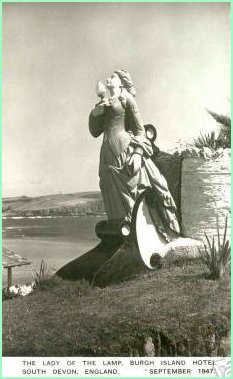
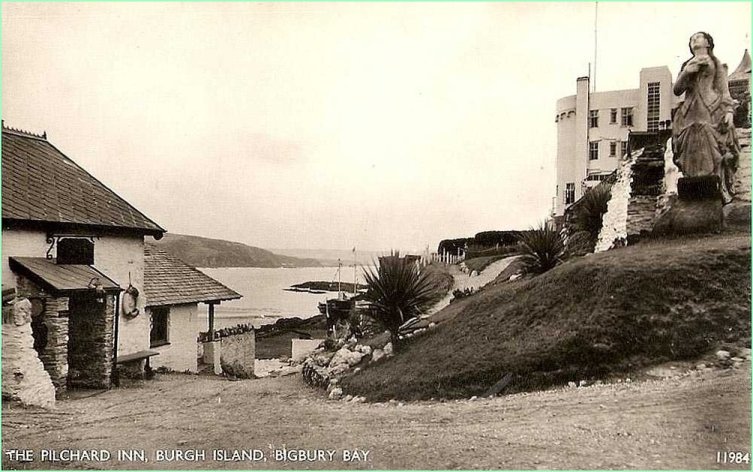
The Caterpillar-Tractor
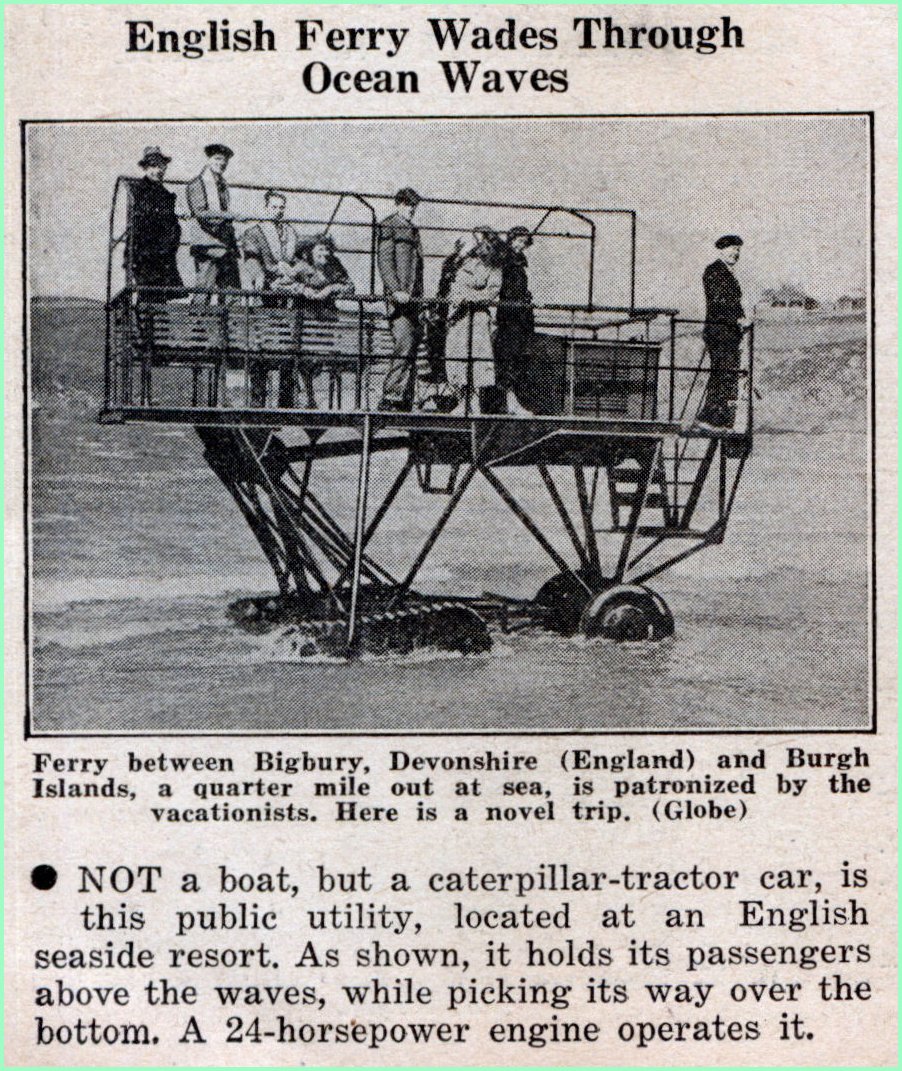
(Page under construction)
Page refreshed : 13th April 2021 (G)

